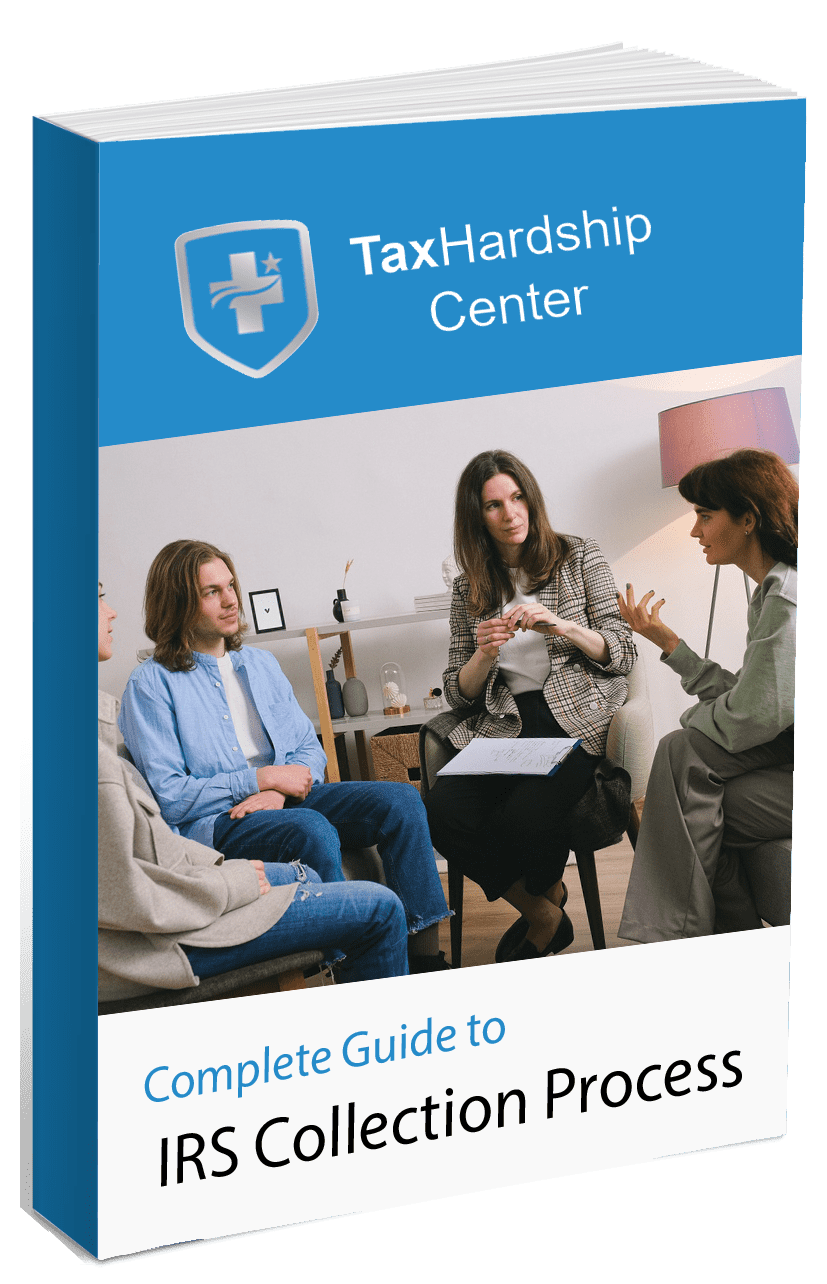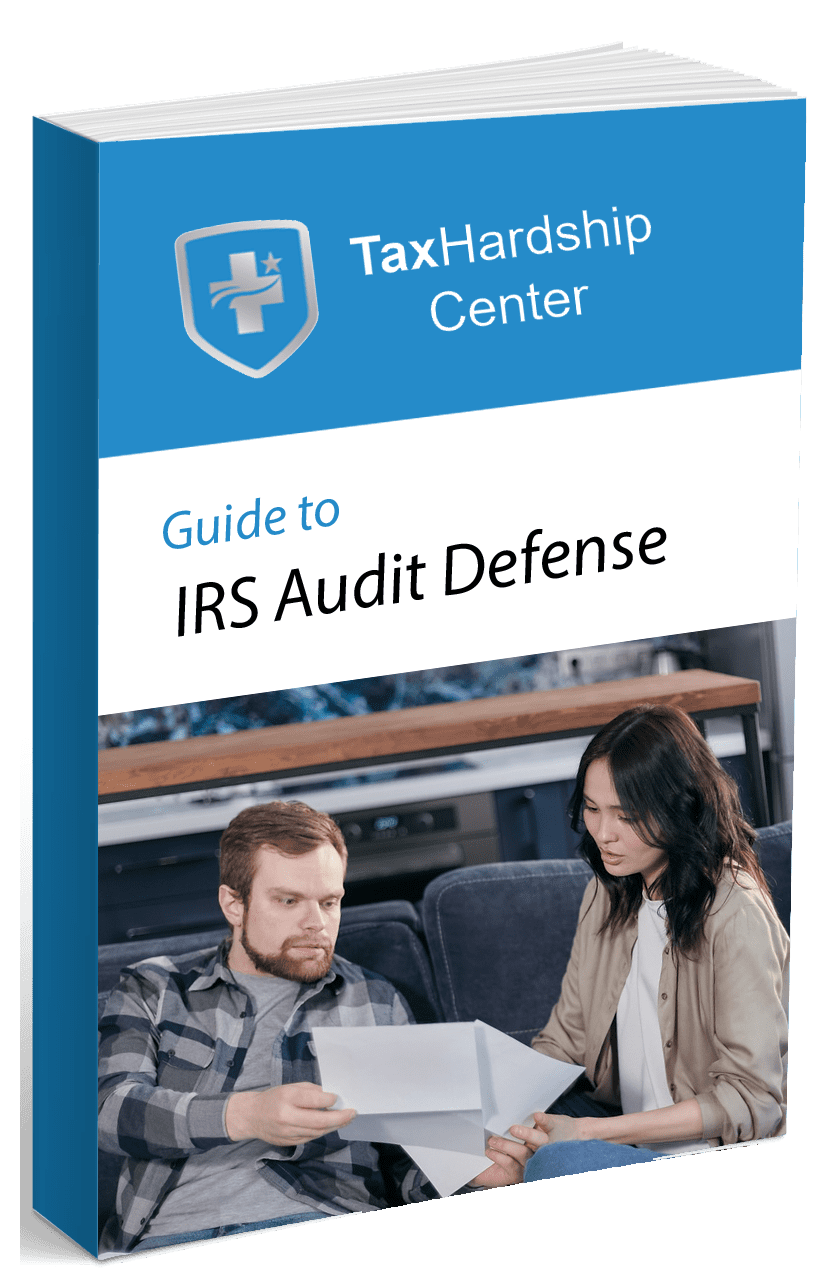How to file taxes when one spouse owns a business can involve specific steps that differ from a standard joint return. Some couples wonder whether to combine their incomes on a single return or file separately. Others worry about self-employment taxes or missing out on deductions. This guide addresses each concern with direct, easy-to-follow advice. It explains filing statuses, self-employment rules, deductions, credits, estimated taxes, and more. You’ll discover how to make informed decisions and keep your household finances on solid ground.
Determining Your Filing Status
You’ll first need to decide whether to file jointly or separately. This choice influences your total tax bill, access to credits, and how you report income. Couples often choose Married Filing Jointly to simplify their returns, but Married Filing Separately can help in specific circumstances.
Advantages of Filing Jointly When One Spouse Owns a Business
Filing jointly can offer several benefits. You’ll combine your incomes, which may expand eligibility for certain tax breaks. Many couples enjoy a higher standard deduction and easier record-keeping when one spouse runs a business.
You often gain access to larger or more accessible tax credits by filing jointly. Losses from the spouse’s business may reduce overall taxable income, possibly improving eligibility for credits with income limits. You also file a single return, which can streamline household finances under one tax umbrella.
Disadvantages of Filing Jointly
Married Filing Jointly isn’t always ideal. Both spouses accept responsibility for the accuracy of the return and any taxes owed. If the spouse’s business triggers a large debt or audit, the IRS may hold both partners liable.
Combined income might also push you into a higher tax bracket, raising your overall liability. Some couples find that filing separately reduces their total taxes if the business income is large or if special deductions work out better that way.
When to Consider Filing Separately
Married Filing Separately might suit couples who want to protect one spouse from the other’s potential tax issues. If your spouse’s business faces unique risks or outstanding debts, separate filing can limit responsibility for those liabilities.
Couples with uneven deductions—like major medical expenses in one spouse’s name, may lower their total tax by filing separately. That way, the spouse with the significant deduction applies it against a lower personal income. However, you lose certain credits, such as the Earned Income Tax Credit, if you file separately, so compare carefully.
Work With Our Team at Tax Hardship Center
Our specialists at Tax Hardship Center offer insights and strategies tailored to each taxpayer’s needs. We know that life events like job loss or minimal freelance work can still trigger legal or financial obligations. We also understand that refunds or credits might come into play, even when your reported wages are low or nonexistent. If you want personalized help with your tax filings, please visit:
https://www.taxhardshipcenter.com/
We focus on practical solutions so you can feel secure about your standing with the IRS. Our team strives to save you time and trouble, all while keeping you informed about your unique options.
Understanding Self-Employment Taxes
Many new entrepreneurs don’t realize they pay self-employment tax on top of regular income tax. When you file as a couple and one spouse runs a business, calculate these obligations correctly to avoid unpleasant surprises.
What Is Self-Employment Tax?
Self-employment tax covers Social Security and Medicare contributions for individuals who work for themselves. Typically, employers split these taxes with employees via payroll withholding. Self-employed individuals pay the full combined rate themselves. Generally, if your net business earnings exceed 400 dollars, you owe self-employment tax.
Calculating Self-Employment Tax
You report self-employment tax on Schedule SE, based on the net profit or loss you calculate on Schedule C. The standard rate is 15.3 percent, split into 12.4 percent for Social Security and 2.9 percent for Medicare. The Social Security portion may stop once your earnings reach a specific threshold. Keep accurate records of income and expenses to ensure you calculate net profit properly.
Deducting Half of the Self-Employment Tax
You can deduct half of your self-employment tax from your income on Form 1040. This “above-the-line” deduction effectively lowers your adjusted gross income. While you still pay the entire tax, you save overall because you’re treated similarly to a W-2 employee whose employer covers half the Social Security and Medicare burden.
Reporting Business Income and Expenses
Accurate bookkeeping is critical if one spouse owns a business. Track revenues, expenses, receipts, and payment proofs. The IRS expects you to document and differentiate personal and business finances.
Using Schedule C (Form 1040)
Most sole proprietors report earnings on Schedule C, which lists the business name, main service, and accounting method (cash or accrual). You subtract allowable expenses from total revenue to find net profit or loss. That net figure transfers to Form 1040.
Some married business owners might structure as a partnership, LLC, or corporation, each with different filing requirements. A single-member LLC typically defaults to Schedule C unless you choose a separate classification.
Common Business Expenses to Deduct
Qualifying business expenses include advertising, rent, insurance, professional services, travel for business, and more. Vehicle costs, office supplies, and utilities can also be deducted if they’re purely business-related. The IRS looks for “ordinary and necessary” expenses in your industry.
Avoid mixing personal and business expenses. Keep separate bank accounts or detailed records if you must share resources, ensuring a clear audit trail.
Record-Keeping Requirements
Keep records for at least three years from the filing date, though some people retain documents longer. Save receipts, invoices, bank and credit card statements, canceled checks, and any forms that prove your income or deductible expenses. Good record-keeping helps if the IRS asks for clarification.
Qualified Joint Ventures for Married Couples
A qualified joint venture offers a simpler way for married couples to report co-owned businesses, especially when they share responsibilities and profits.
What Is a Qualified Joint Venture?
A qualified joint venture allows spouses to file separate Schedules C (or F for farming) instead of a partnership return (Form 1065). Each spouse recognizes a portion of business income and expenses. This reduces paperwork while giving each spouse credit for self-employment earnings.
Eligibility Criteria
To qualify, both spouses must be the only owners, both materially participate in running the business, and neither is treated as an employee. The business must not be incorporated, and you must file a joint return if you choose to be treated as a qualified joint venture.
Filing Requirements for Qualified Joint Ventures
Each spouse completes a Schedule C, dividing income and expenses according to their ownership interest (often 50/50 if they share the workload equally). Each spouse also files Schedule SE for self-employment tax. Then, they include their combined totals on one joint Form 1040.
Impact on Standard and Itemized Deductions
Married couples can choose the standard deduction or itemize. The better option depends on the value of your itemizable expenses.
Standard Deduction for Married Couples
Those who file jointly often enjoy a higher standard deduction compared to single filers. If your itemizable costs don’t exceed that threshold, the standard deduction simplifies your return while still offering significant tax savings.
When to Itemize Deductions
If you’ve accumulated substantial deductible expenses, such as mortgage interest, medical bills, and charitable contributions, adding them up might surpass the standard deduction. In that case, itemizing reduces your taxable income more. Note that if you file separately and one spouse itemizes, the other spouse must itemize, too.
Business Deductions vs. Personal Deductions
Expenses directly related to generating business income go on Schedule C, reducing self-employment income. Personal deductions (like medical bills or home mortgage interest) go on Schedule A. Keep them separate to satisfy IRS guidelines and avoid confusion.
Tax Credits Available to Married Couples
Credits reduce your taxes directly, making them often more valuable than deductions. Several popular credits can apply to married couples, even when one spouse is self-employed.
Earned Income Tax Credit (EITC)
The EITC supports low- to moderate-income households, based on total income and number of qualifying children. If one spouse’s business doesn’t earn much while the other has moderate wages, you might qualify. Check annual IRS updates for income thresholds.
Child and Dependent Care Credit
If you pay for childcare or adult dependent care so both spouses can work or seek work, this credit may apply. A self-employed spouse typically qualifies if they’re actively running the business. Keep documentation of care provider costs, such as day care or after-school programs.
Education Credits
The American Opportunity Tax Credit (AOTC) and Lifetime Learning Credit can offset tuition, fees, and related expenses. Generally, you have to file jointly to claim them. Couples with one spouse in school might find these credits substantially reduce their overall tax.
Estimated Tax Payments
Instead of regular paycheck withholdings, self-employed individuals pay taxes quarterly. Managing this process helps you avoid a big bill at tax time.
Who Needs to Make Estimated Payments?
If you expect to owe at least 1,000 dollars beyond what any withholding covers, the IRS wants you to pay estimated taxes. The prior-year safe harbor rule says if you paid 100 percent of last year’s tax (110 percent for higher earners) throughout this year, you typically escape penalties.
Deadlines for Estimated Tax Payments
Quarterly deadlines usually fall in mid-April, mid-June, mid-September, and mid-January. Use Form 1040-ES to figure the amounts. Missing these deadlines may incur underpayment penalties, even if you pay the full total by year-end.
Penalties for Underpayment
Underpayment penalties grow over time based on how much and how long you were short. If the other spouse has a W-2 job, you can adjust their withholding to compensate for the self-employed spouse’s earnings. This approach might reduce or eliminate the need for separate quarterly estimates.
Retirement Contributions and Benefits
Self-employed individuals have several retirement options that can reduce current taxes and build nest eggs. Spouses should coordinate contributions to maximize benefits.
Retirement Plan Options for Self-Employed Individuals
A Solo 401(k), SEP IRA, or SIMPLE IRA allows high contribution limits and potential tax savings. Solo 401(k)s can be especially useful if your net income is high. You can contribute both as “employer” and “employee,” lowering your taxable earnings significantly.
Spousal IRA Contributions
Even if one spouse doesn’t earn wages, that spouse may contribute to an IRA if the other spouse has sufficient income. This can be a Traditional IRA (with tax-deductible contributions if under certain income limits) or a Roth IRA (with tax-free withdrawals later, but no initial deduction). Spousal contributions help both partners save for retirement.
Tax Benefits of Retirement Contributions
Contributions to these accounts reduce your adjusted gross income in the current year (except Roth IRA contributions). Over time, gains grow tax-deferred. These plans also help self-employed individuals match or exceed what W-2 workers can do with employer-sponsored 401(k)s.
Health Insurance Considerations
Medical costs can loom large for self-employed people. Fortunately, you can deduct certain premiums and use special accounts to manage costs.
Self-Employed Health Insurance Deduction
If you’re self-employed and not eligible for employer-subsidized coverage, you may deduct premiums for yourself, your spouse, and your dependents. This deduction appears directly on Form 1040, reducing your taxable income.
Health Savings Accounts (HSAs)
HSAs work with high-deductible plans. Contributions are tax-deductible, and distributions for qualified medical expenses are tax-free. Family coverage allows higher contribution limits. If your spouse also has an HSA-eligible plan, you can potentially save even more on taxes while preparing for future healthcare needs.
Impact on Premium Tax Credits
If you buy insurance through the Health Insurance Marketplace, you might qualify for a Premium Tax Credit based on estimated income. Self-employment income can change during the year, so carefully track your earnings. If your actual income is higher than expected, you may need to repay some of those credits.
State Tax Implications
State rules can shape how you report and split business income. Community property states might divide earnings differently than common law states.
Community Property States vs. Common Law States
In community property states, most income earned during marriage is shared equally. This can affect how you split business profits on your state return if you file separately. Common law states usually allocate income to the spouse who earned it.
State-Specific Tax Obligations
Some states levy additional taxes or fees on businesses, such as franchise taxes. Others have targeted credits or incentives for small businesses. Check your state’s deadlines and rules so you don’t overlook potential benefits or requirements.
Local Tax Considerations
Cities and counties may require business licenses or local taxes. Keep up with these obligations to avoid penalties. Maintaining a separate calendar or checklist can help you stay organized for local filings.
Hiring Your Spouse as an Employee
Some owners bring their spouse on as a legitimate employee. This arrangement can provide benefits but also adds payroll responsibilities.
Tax Implications of Employing a Spouse
If your spouse is on the payroll, you must pay employer payroll taxes, withhold taxes from their wages, and issue a W-2. These wages are then a business expense deduction, lowering your net business income. However, you need to follow all employment tax rules.
Payroll Tax Responsibilities
You’ll need to deposit federal income tax, Social Security, and Medicare withholdings. You also file employment tax forms, like Form 941. This ensures compliance and properly credits your spouse’s Social Security record.
Benefits and Drawbacks
Hiring your spouse creates a deductible wage expense. It can also open eligibility for certain benefits, such as employer-sponsored health insurance. Yet you take on more paperwork and must pay the employer share of payroll taxes. The arrangement should mirror any normal employer-employee relationship, including reasonable compensation for the tasks performed.
Preparing for an IRS Audit
Business owners face stricter scrutiny than typical wage earners. Good records and accurate claims help you sail through any questions.
Common Red Flags for Small Businesses
Large or unverified deductions stand out to the IRS. Mixing personal and business finances, listing repeated losses without a clear profit motive, or claiming excessive home office deductions can prompt a closer look.
Documentation to Maintain
Hold on to receipts, invoices, bank statements, and anything else that supports your income and deductions. Keep logs of business mileage if you use a vehicle. If claiming a home office, document the exact space and confirm it’s used exclusively for business.
Steps to Take if Audited
Respond quickly and politely to any IRS notice. Provide all requested records in an organized fashion. Many audits happen by mail, focusing on specific items. Clear documentation of business activities often resolves issues without further complications.
Utilizing Professional Tax Assistance
A tax professional can be invaluable if you face unique circumstances or complex filings. Their expertise may uncover savings you’d otherwise miss.
When to Hire a Tax Professional
If you have multiple income streams, a new business structure, or concerns about an audit, consider professional help. Tax professionals also excel at resolving back taxes or payment plans if you’re worried about liabilities.
Benefits of Professional Guidance
Experienced professionals stay updated on new tax laws, catch overlooked deductions, and reduce errors that lead to penalties. They can also represent you before the IRS, saving time and stress.
Choosing the Right Tax Advisor
Seek a CPA, enrolled agent, or attorney who deals regularly with self-employed clients and married filers. Check references, confirm fees, and make sure you’re comfortable asking follow-up questions. A good advisor explains your return in everyday language.
Here’s a trusted option: Tax Hardship Center. They focus on helping individuals and families address and prevent IRS issues, offering support especially if you’re self-employed. Learn more at https://www.taxhardshipcenter.com/.
Navigating Tax Deadlines
Important Tax Deadlines for Married Couples
Tax Day typically falls in mid-April. If one spouse files Schedule C and the other reports W-2 wages, gather both sets of data for your joint Form 1040. Self-employed folks must also watch quarterly deadlines for estimated taxes.
Extensions and Penalties
If you need extra time, file Form 4868 for a six-month extension to submit your return. However, you must still pay any anticipated taxes by the regular April deadline. If you don’t, the IRS charges interest and penalties on the unpaid balance.
Staying Organized Throughout the Year
Maintain a dedicated system for tracking expenses, income, and receipts. Set up reminders for estimated payments. Save yourself the stress of scrambling in the spring by keeping everything in order as you go.
Understanding the Marriage Penalty and Bonus
Tax brackets can produce a “penalty” or “bonus” when couples combine their incomes on a joint return.
What Is the Marriage Penalty?
A marriage penalty occurs if your combined income places you in a higher bracket or phase-out range than you’d face individually, causing you to pay more tax together than you would apart.
Situations Leading to a Marriage Bonus
If one spouse earns substantially more than the other, combining incomes can sometimes lower the overall rate. This “bonus” occurs when the higher earner’s tax bracket drops after factoring in the other spouse’s lesser or zero income.
Strategies to Mitigate the Marriage Penalty
Some couples file separately to avoid a steeper bracket, though you can lose certain credits. You might also increase retirement contributions, shift income, or time certain transactions to minimize combined taxable income. Reevaluate each year as your finances evolve.
Impact of Business Structure on Taxes
Sole proprietorships, partnerships, and S corporations each handle income differently. The ideal structure varies by goals and liability considerations.
Sole Proprietorship vs. Partnership
Sole proprietors file Schedule C and pay self-employment tax on all profits. Partnerships file Form 1065, issuing Schedule K-1 to each partner. Married couples running a business together may qualify for a joint venture if they meet the rules and want to avoid partnership paperwork.
Electing S Corporation Status
Some small-business owners elect to be treated as an S corporation. They pay themselves a “reasonable salary” subject to payroll taxes. Remaining profits often avoid some self-employment taxes, though corporate formalities and additional filings apply. You’d file Form 1120-S for the business and transfer your share of income to your personal return via Schedule K-1.
Legal and Tax Implications of Different Structures
An LLC can limit personal liability, but each state has its own rules and fees. An S corporation might save money on taxes if profits are high enough to justify the payroll and administrative tasks. Balance these considerations with liability protection needs before deciding.
Coordinating Withholding and Estimated Taxes
When one spouse has a W-2 job and the other is self-employed, coordinate to avoid an unexpected tax bill.
Adjusting Withholding on W-2 Income
Increase or decrease withholding through Form W-4 for the employed spouse. Use the IRS Tax Withholding Estimator or other tools to figure a reasonable amount. Adjust your approach if business earnings change mid-year.
Calculating Combined Tax Liability
Look at both spouses’ incomes and expected deductions or credits. Then project the total tax you’ll owe. Pay enough through estimated taxes or withholding to avoid penalties. Keep an eye on any changes in the business that could raise or lower income significantly.
Avoiding Underpayment Penalties
Generally, you must pay at least 90 percent of this year’s tax or 100 percent of last year’s tax throughout the year. If the business has a profitable season, you can increase one quarter’s estimated payment accordingly or ask the employed spouse to adjust withholding to cover the shortfall.
Filing Requirements for Spouses With Separate Businesses
If both spouses run independent businesses, each reports income and expenses separately.
Separate vs. Joint Business Filings
You can still file a joint return, but you’ll attach two Schedules C (or other relevant schedules) if each spouse is a sole proprietor. Each spouse calculates self-employment tax on their share of net profit.
Allocating Income and Expenses
Keep clear records so you know which income and costs belong to which business. If you share resources (like a home office), decide how to split related expenses based on actual use or another reasonable, documented method.
Implications for Self-Employment Tax
Each spouse owes self-employment tax on their own net profits if each exceeds 400 dollars. Monitor each business’s performance. Two profitable ventures can increase total tax, but you can also share certain strategies, like retirement account contributions.
Managing Business Losses
Not all ventures profit every year. Sometimes, losses occur that can help offset other income.
Deducting Business Losses Against Other Income
On a joint return, one spouse’s business losses can reduce the other spouse’s W-2 or investment income, potentially lowering overall taxes. The IRS expects a legitimate profit motive, so ongoing losses without a true attempt at profitability might be questioned.
Carryforward and Carryback Rules
If you generate a substantial net operating loss (NOL), you might carry it forward to offset future income. The availability of carrybacks can depend on current IRS rules, which change occasionally. Tracking these carefully can significantly help in later profitable years.
Impact on Future Tax Returns
Losses now can reduce your tax in the future. Plan around these rules, especially if you foresee a business upswing next year. Keep accurate records of any NOL to ensure you can claim it properly when it’s time.
Tax Planning Strategies for Married Couples
Effective tax planning goes beyond meeting deadlines. It involves making decisions that minimize taxes and bolster household finances all year.
Year-End Tax Planning Tips
As the calendar year closes, examine your income and expenses. You might want to prepay certain bills to accelerate deductions or delay some client invoices to the next year if you’re already near a higher bracket. Check deadlines for retirement plan contributions or charitable donations.
Long-Term Tax Reduction Strategies
Consider forming an LLC or electing S corporation status when it suits your earnings level and liability concerns. Some industries also offer specialized credits or accelerated depreciation for certain investments. Use tax software or consult a professional to identify the best long-term moves.
Coordinating Business and Personal Tax Goals
Marital finances blend personal and business concerns. Discuss how each spouse’s decisions, such as buying equipment or expanding the enterprise—affect your combined bracket. Good communication ensures you don’t miss deductions or unexpectedly owe more than you can handle.
Conclusion
Filing taxes when one spouse owns a business calls for a careful approach to self-employment taxes, deduction strategies, and choosing the optimal filing status. Pay attention to retirement options, health insurance rules, and potential state-specific considerations. Keep your documentation organized, review finances regularly, and consult professionals when needed. By taking these steps, you’ll protect your household finances and manage each tax season with confidence.
Why Tax Hardship Center?
1. Hassle-Free Assistance:
Say goodbye to sleepless nights and endless tax-related stress. At the Tax Hardship Center, we believe in simplifying the complex. Our team of experts is dedicated to guiding you through every step of the process, ensuring that your tax concerns are met with precision and care.
2. 14-Day Money Back Guarantee:
We’re so confident in our ability to ease your tax worries that we offer a 14-day money-back guarantee. If you’re not satisfied with our service for any reason, we’ll gladly refund your investment. Your peace of mind is our top priority!
3. Free Consultation:
Are you curious about how we can transform your tax experience? Book a free consultation now! Our team will assess your situation, answer your questions, and provide free insights tailored to your needs.
4. Nationwide Coverage:
No matter which corner of the United States you call home, the Tax Hardship Center covers you. We proudly serve all 50 states, bringing our expertise to your doorstep. Wherever you are, our commitment to excellence follows.
FAQs
- Can we claim a home office deduction if only one spouse owns the business?
Yes. The spouse who runs the business can claim the home office deduction if a specific area of the home is used exclusively for business. Only that spouse can claim it, and the space cannot serve personal activities. - Does employing my spouse in my business always reduce taxes?
Not necessarily. You must set up payroll, withhold taxes, and pay the employer share of Social Security and Medicare. While it can create a legitimate wage deduction and possibly extend benefits, you need to balance that against extra bookkeeping and taxes. - Should we form an LLC even if only one spouse is involved in the business?
An LLC can protect personal assets from business liabilities. It may be worthwhile if you have substantial risk or want that legal protection. However, state fees and administrative requirements vary. If only one spouse actively runs the company, a single-member LLC might be enough. - Will filing jointly limit how much the business-owning spouse can contribute to a retirement plan?
No. Contributions to a SEP IRA, Solo 401(k), or other self-employed plan depend on the spouse’s net business income. Filing jointly does not directly lower the amount. However, total household income may affect other accounts like Roth IRAs. - What tax credits do we lose if we file separately? Many credits, such as the Earned Income Tax Credit and education credits, are unavailable to those who file separately. Before deciding on a filing status, compare what you’d gain or lose by checking eligibility rules for the credits most relevant to your situation.








